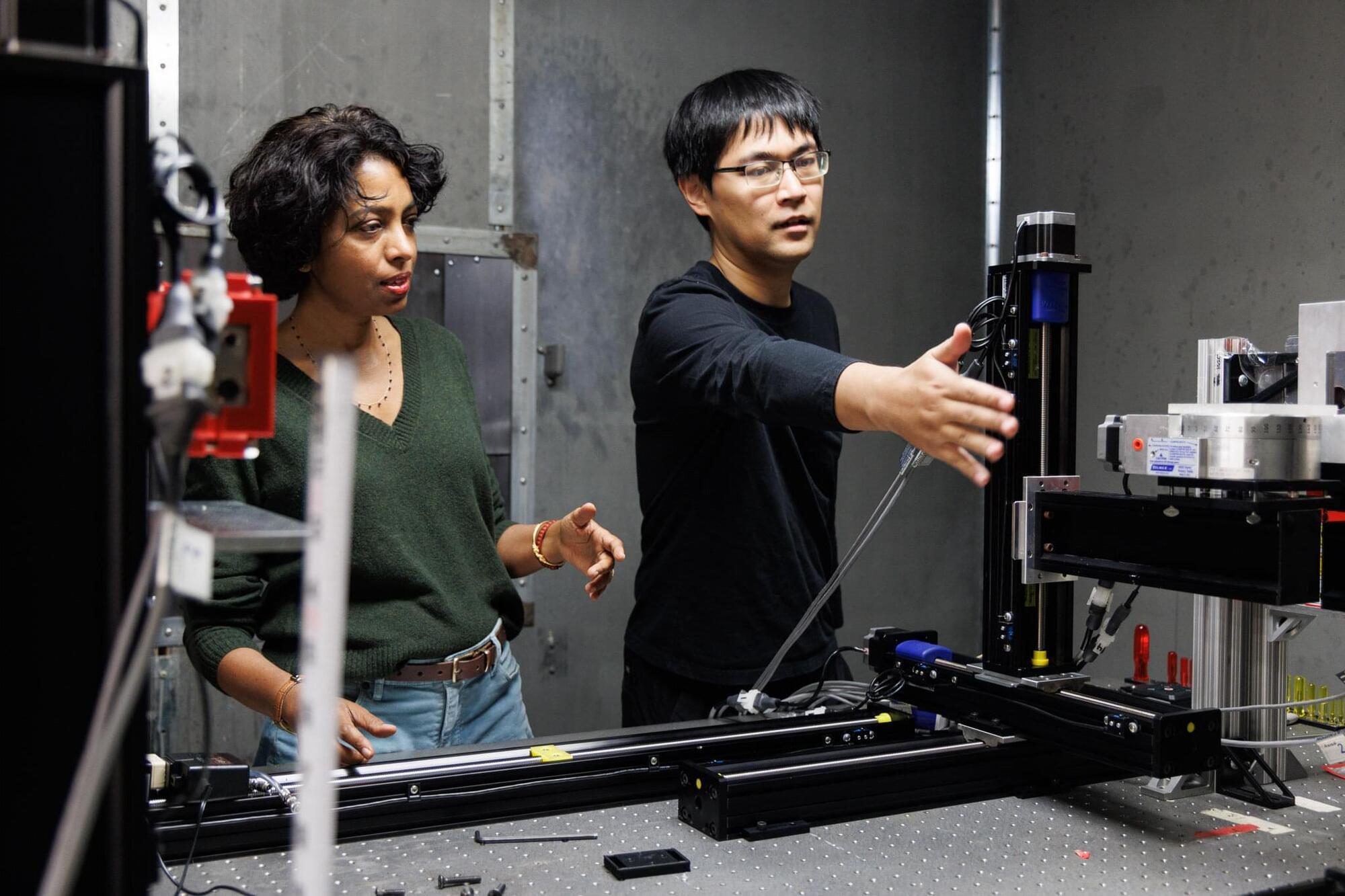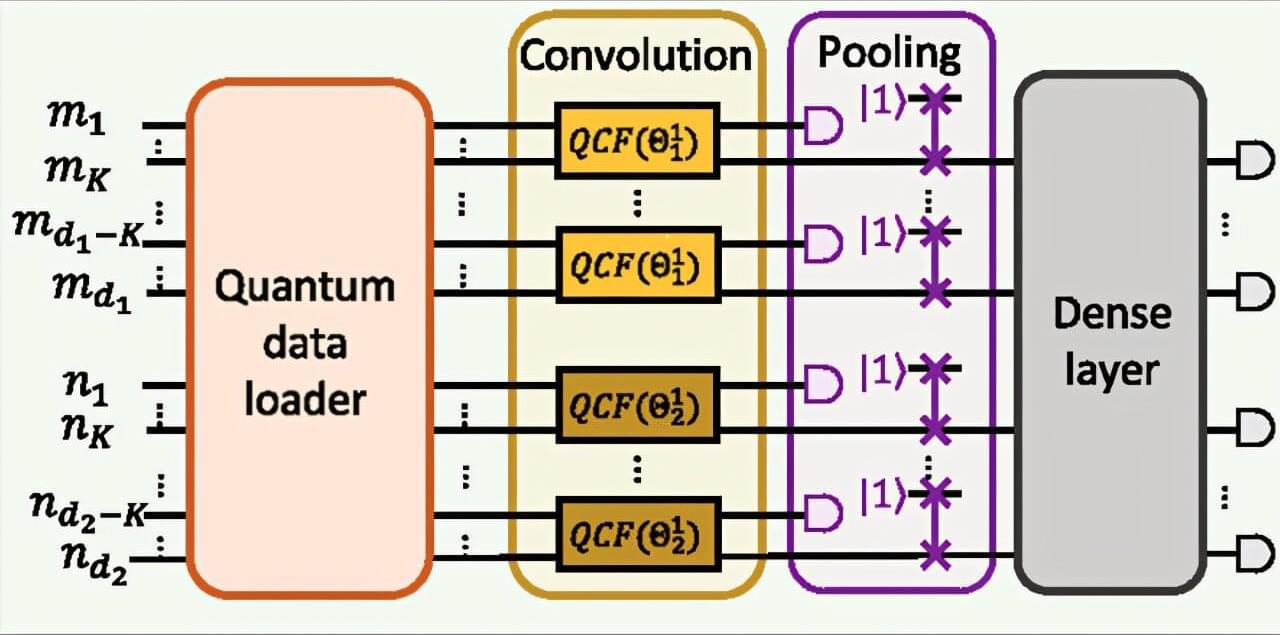University of Houston researchers developed a new X-ray imaging method capable of revealing hidden features in a single shot, a breakthrough that could advance cancer detection, disease monitoring, security screening and material analysis.



Machine learning models called convolutional neural networks (CNNs) power technologies like image recognition and language translation. A quantum counterpart—known as a quantum convolutional neural network (QCNN)—could process information more efficiently by using quantum states instead of classical bits.
Photons are fast, stable, and easy to manipulate on chips, making photonic systems a promising platform for QCNNs. However, photonic circuits typically behave linearly, limiting the flexible operations that neural networks need.

In a new study, published in JAMA Network Open, 295 participants report promising mental health benefits after reducing their social media usage for a week. The cohort consisted of young adults from the ages of 18 to 24—the age group commonly associated with the highest social media usage, as well as a heightened risk of mental health issues.
Although many self-reports have surfaced online indicating that reducing social media use has been beneficial in various ways, the scientific link between social media use and youth mental health is still debated, with past studies showing mixed results.

Earlier in 2025, Chinese solar manufacturer Longi announced it had built the world’s most efficient solar cell. The hybrid interdigitated back-contact (HIBC) cell achieved 27.81% efficiency, which was verified by Germany’s Institute for Solar Energy Research Hamelin (ISFH).
Now, in a paper published in the journal Nature, researchers are sharing the technical details of their breakthrough.
For solar technology to deliver on its promise, solar cells and panels must convert as much sunlight as possible into energy. Typically, standard cells achieve up to 26% efficiency, that is, they convert 26% of the sunlight hitting them into electrical energy.

A multi-institutional team of researchers led by Université de Montréal report that extensive musical training can steady the body in space, both with and without guiding sounds, during a blindfolded stepping test.
Spatial cognition is at the heart of everyday movement, linking mental maps of the environment with the body’s position and orientation. Spatial abilities support tasks such as mental rotation, navigation, walking through space, and maintaining spatial information in working memory, all of which depend on a stable sense of where the body is located.
Body representation provides a solution to what some researchers describe as the computational “where” problem of the body, knitting together inputs from vision, touch, and the vestibular system. Auditory cues join this network as well, supplying information that can help stabilize posture and guide movement when other senses are limited or absent, as described in prior work on postural control and ambulation.

The Wave Engineering for eXtreme and Intelligent maTErials (We-Xite) lab, led by engineering assistant professor Osama R. Bilal, has developed a reconfigurable metamaterial that can control sound waves—bending them, dampening them, or focusing them—while encoding real-time tuning with almost infinite possible shapes.
Their work is now published in the Proceedings of the National Academy of Sciences.
“Metamaterials are artificial materials that can achieve extraordinary properties not easily found in nature,” explains Ph.D. candidate Melanie Keogh ‘22 (ENG), the first author of the study. In this case, the research team wanted to develop a material that could control sound waves, while being adjustable in both frequency and function, with potential applications ranging from medical imaging to soundproofing.

Using various ground-based and space telescopes, an international team of astronomers has observed a recently discovered fast X-ray transient designated EP 241021a. Results of the multiwavelength observational campaign, published November 17 on the pre-print server arXiv, shed more light on the behavior and nature of this transient.
Fast X-ray transients (FXTs) are bursts in soft X-rays lasting from a few hundred seconds to several hours. They are very difficult to detect because they occur at unpredictable locations and times and their activity is very brief. Moreover, their nature is still puzzling. However, astronomers trying to explain their origin take into account several scenarios; for instance, stellar flares, supernova shock breakouts, and long gamma-ray bursts (GRBs).
EP 241021a is an FXT detected on October 21, 2024, with the Wide-field X-ray Telescope (WXT) onboard the Einstein Probe (EP) satellite, at a redshift of 0.75. It exhibited a luminous soft X-ray flash lasting about 100 seconds and a peak 0.5–4 keV luminosity of approximately one quindecillion erg/s.

Iron-nitrogen-carbon catalysts have the potential to replace the more expensive platinum catalysts currently used in fuel cells. This is shown by a study conducted by researchers from the Helmholtz-Zentrum Berlin (HZB), Physikalisch-Technische Bundesanstalt (PTB) and universities in Tartu and Tallinn, Estonia. The research is published in the journal ACS Nano.
At BESSY II, the team observed the formation of complex microstructures within various samples. They then analyzed which structural parameters were particularly important for fostering the preferred electrochemical reactions. The raw material for such catalysts is well decomposed peat.
Fuel cells convert the chemical energy of hydrogen directly into electrical energy, producing only water. Fuel cells could be an important component in a climate-neutral energy system. The greatest potential for improvement lies in the reduction of costs via the replacement of the electrocatalysts, which are currently based on the precious metal platinum.

A collaboration between the groups of Professor Mónica H. Pérez-Temprano at the Institute of Chemical Research of Catalonia (ICIQ) and Professor Anat Milo at Ben-Gurion University of the Negev has uncovered how the characteristics of specific substrates require certain reaction conditions that determine the course of a chemical reaction, in the context of C–H deuteration reactions.
The study, published in Nature Catalysis, combines detailed experiments with data science rooted in reaction intermediates. By correlating molecular features with reaction outcomes, the researchers reveal that the choice of deuterium source—such as heavy water (D2O), deuterated methanol (CD3OD), or acetic acid-d4 (AcOD-d4)—does more than merely influencing the degree of deuterium incorporation. It can actively alter the reaction pathway, revealing hidden mechanistic complexity that intuition alone could not predict.

A warm hand is enough to drive motion in tiny Salmonella-inspired robots that harness molecular-level dynamic bonding.
A team of researchers from China and the U.S. came together to design soft robots with a coordination-motorized oscillator (CoMO) that can make self-sustained micromovements by harvesting small amounts of energy from sunlight or body heat. At the heart of this innovation is a new supramolecular polydimethylsiloxane (PDMS)-based elastic polymer dynamically crosslinked by Eu3+ at the center.
The findings are published in Angewandte Chemie.